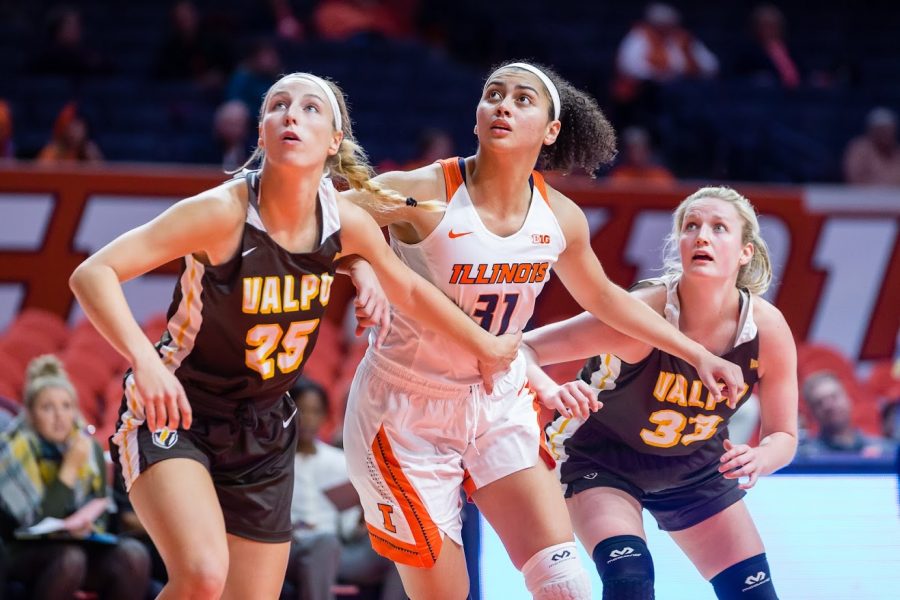Shewan brings veteran motivation
Illinois forward Sarah Shewan (31) tries to box out on a free throw during the game against Valparaiso at State Farm Center on Wednesday, Nov. 14, 2018. The Illini won 73-54.
Feb 7, 2019
Prior to Monday night, graduate transfer Sarah Shewan was shooting 17 percent from 3-point range. Against No. 10 Maryland, Shewan hit five from behind the arc, finishing the game with 16 points and 71 percent three-point shooting.
“Honestly I didn’t take as many shots before the game as I usually do, but when I went out there, I took the open shots and the shots I knew I could make in practice,” Shewan said. “I do put in a lot of extra time, so it was nice to finally see it.”
While Shewan hasn’t highlighted her outside shooting ability much this season, her performance didn’t come as a shock to Illinois head coach Nancy Fahey, who said she always knew Shewan could shoot the ball.
However, along with her shot, Shewan contributes to the team in a way fans or media may not always see: She’s referred to as a motivator.
Shewan played four years at Quinnipiac in Hamden, Connecticut, with two NCAA tournament appearances, including a trip to the Sweet 16.
Get The Daily Illini in your inbox!
Fahey knew Shewan’s experience at the competitive level would do more than help the team get wins and put points on the board. She also saw Shewan as a part of the locker room’s “different feeling” this season.
“I do a lot that you don’t usually see on the court,” Shewan said. “I’m a captain coming from a mid-major school, and I think that’s the most important for me. I’m trying to change the culture here. I’m trying to create a winning culture, and I’m trying to do that for my coach, and we’re trying to do that together; we’re trying to be a team and stay together. I had a good shooting night, but I know I do so much more than that.”
Before coming to Illinois to use her last year of NCAA eligibility, the Ontario native made an impact at Quinnipiac for four years. As a sophomore, Shewan averaged 8.8 points per game and as a junior, 7.4.
Shewan began her senior season averaging 13.3 points per game before tearing her ACL six games into the season, ending her time in Connecticut but allowing her to gain an extra year of eligibility elsewhere.
After recovering, Shewan still didn’t get to work with Illinois as soon as she hoped. However, she was ready once the season began and has contributed in all 22 games.
“Getting used to playing after an ACL is something that, as an individual player, is tougher than you think,” Fahey said. “Being hurt and going through that stuff, she’s battled, and I was really pleased with her.”
Due to the severity of her ACL injury, Shewan was limited in practices during her recovery period, only able to practice shooting. But Shewan’s practice paid off this season: She’s shooting 44 percent from the field and 68 percent from the charity stripe.
“After tearing my ACL last year, you can’t really do a lot other than shoot,” Shewan said. “You can’t work on post moves; you can’t work on driving to the basket with only one leg. I’ve spent a lot of time shooting. Even when I got here, I couldn’t play as soon as I thought I would, but there’s a lot of time that I take outside just shooting by myself. If you put the work in, it’ll come.”






